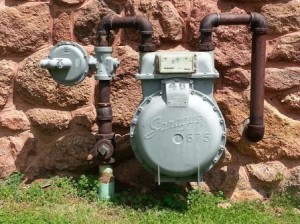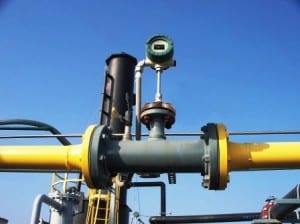When comparing volumetric flow rate to mass flow rate, some distinct advantages for using thermal flowmeters emerge, which measure mass flow rather than a volumetric flow.
What is the volumetric flow rate?

Volume is a three-dimensional measure of the area a substance occupies.
Volumetric flow is the measure of a substance moving through a device over time. Standard units of measurement for volumetric flow rate are meters3 /second, milliliters/second, or feet3/hour.
When heating gas, the molecules bounce off each other, the gas will expand, and the same amount of gas will now have a different space (i.e., Assuming it is not a fixed volume). If the volume is fixed, the pressure will increase when the temperature rises. Additionally, when increasing pressure, the volume measurement reduces.
For this reason, when measuring gas using a volumetric flow meter, temperature and pressure measurement are required, along with the gas density, to convert volumetric flow to mass flow.
What is the mass flow rate?

Mass is how much matter is in a substance and is often expressed in weight (grams, kilograms, tonnes, ounces, or pounds).
Mass flow rate is the amount of a mass moving through an instrument over time, so the unit of measure is mass (or weight) per unit of time and expressed as pounds/hour or kilograms/second or in some similar way. One of the advantages is that when measuring mass flow, the mass or weight does not vary when changing temperature or pressure. However, weight changes with gravity, but as long as we’re dealing with Earth’s applications, gravity is the same, which won’t impact mass flow.
Benefits of Mass Flow Measurement
There are some distinct advantages of using mass flow meters over volumetric meters. When using volumetric meters, there is the added expense of acquiring and installing additional equipment for temperature and pressure correction. There is also an added computation to convert the volumetric flow to mass flow. Additionally, mass flow measurement is recognized as offering more reliable, added accuracy, and better repeatability data than volumetric flow methods.
Examples of Mass Flow Meters
The following devices measure gas mass flow:
Examples of Volumetric Flow devices
The following devices measure volumetric flow:
- Positive displacement meters
- Turbine flow meters
- Orifice plates
- Venturis
- Vortex meters
- Pitot tubes
- Rotometers
This video describes density, mass flow vs. volumetric flow rate.
You can find more information on Gas Meter Types for Flow Measurement.



